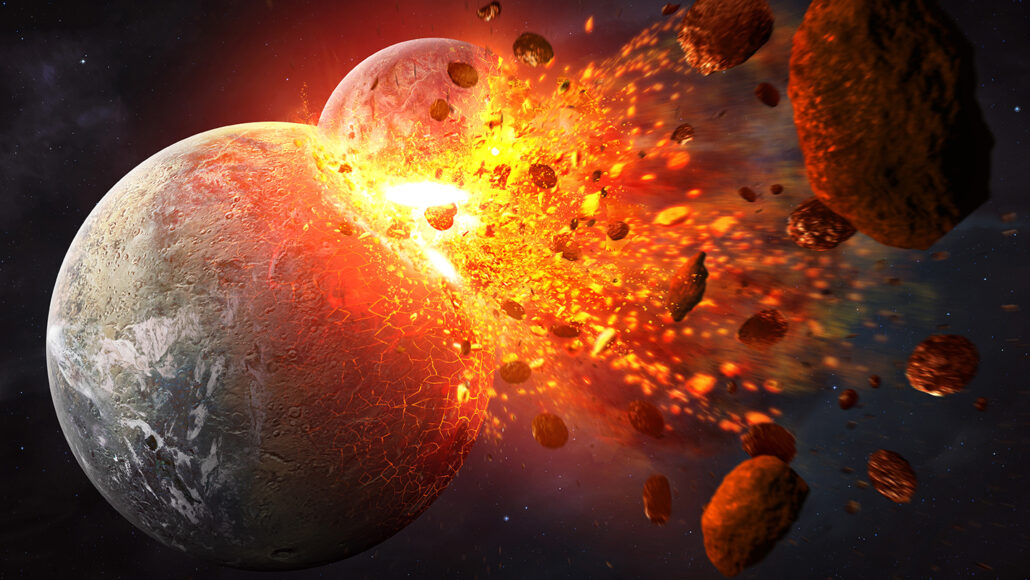THE WOODLANDS, TEXAS — Vestiges of a moon-forming cataclysm could have kick-started plate tectonics on Earth.
The leading explanation for the origin of the moon proposes that a Mars-sized planet, dubbed Theia, struck the nascent Earth, ejecting a cloud of debris into space that later coalesced into a satellite (SN: 3/2/18). New computer simulations suggest that purported remains of Theia deep inside the planet could have also triggered the onset of subduction, a hallmark of modern plate tectonics, geodynamicist Qian Yuan of Caltech reported March 13 at the Lunar and Planetary Science Conference.

The story offers a cohesive explanation for how Earth gained both its moon and its moving tectonic plates, and it could aid in the search for other Earthlike worlds. But others caution that it’s much too early to say that this is, in fact, what happened.
Of all the worlds yet discovered, ours is the only one confirmed to have plate tectonics (SN: 1/13/21). For billions of years, Earth’s creeping plates have spread, collided and plunged beneath one another, birthing and splitting continents, uplifting mountain ranges and widening oceans (SN: 4/22/20, SN: 1/11/17). But all this reshaping has also erased most of the clues to the planet’s early history, including how and when plate tectonics first began.
Many hypotheses have been proposed to explain the initiation of subduction, a tectonic process in which one plate slides under another (SN: 5/2/22; SN: 6/5/19; SN: 1/2/18). Yuan and his colleagues chose to focus on two continent-sized blobs of material in Earth’s lower mantle known as large low-shear velocity provinces (SN: 5/12/16). These are regions through which seismic waves are known to move anomalously slow. Researchers had previously proposed these regions could have formed from old, subducted plates. But in 2021, Yuan and colleagues alternatively proposed that the mysterious masses could be the dense, sunken remnants of Theia.
Building off that previous work, the researchers used computers to simulate how Theia’s impact, and its lingering remains, would impact the flow of rock inside the Earth.
They found that once these hot alien blobs had sunk to the bottom of the mantle, they could have compelled large plumes of warm rock to upwell and wedge into Earth’s rigid outer layer. As upwelling continued to feed into the risen plumes, they would have ballooned and pushed slabs of Earth’s surface beneath them, triggering subduction about 200 million years after the moon formed.
While the simulations suggest the large low-shear velocity provinces could have had a hand in starting subduction, it’s not yet clear whether these masses came from Theia. “The features … are a fairly recent discovery,” says geodynamicist Laurent Montési of the University of Maryland in College Park. “They’re very fascinating structures, with a very unknown origin.” As such, he says, it’s too early to say that Theia triggered plate tectonics.
“It’s provoking. This material down there is something special,” Montési says of the large low-shear velocity provinces. “But whether it has to be originally extraterrestrial, I don’t think the case is made.”
However, if confirmed, the explanation could have implications that reach beyond our solar system. “If you have a large moon, you likely have a large impactor,” Yuan said. Scientists have yet to confirm the discovery of such an exomoon (SN: 4/30/19). But keeping an eye out, Yuan said, could help us uncover another world as tectonically active as our own.

source: sciencenews.org








